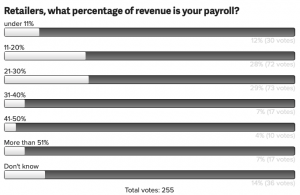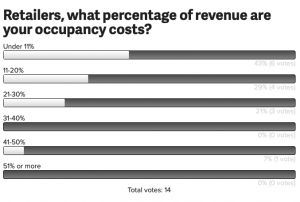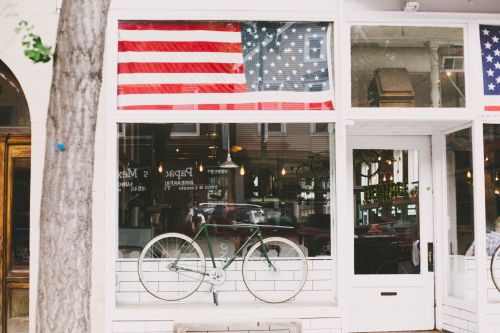Editor's note: David DeKeyser and his wife Rebecca Cleveland owned and operated The Bike Hub in De Pere, Wisconsin, for nearly 18 years. Last year, they sold the business and real estate to another retailer based in a nearby community. In last week's Positive Spin column, David wrote "What you pay for your storefront and everything related (such as taxes, utilities etc.) should typically be under 10%. Your payroll expenses should be about 25% including owners’ wages."
Many retailers find those levels unattainable in their market and have asked what they can do. We summarized those concerns in a fictional retailer's question this week. If you have more questions about retail profitability, email Dave at David@nbda.com, and he may answer them in a future column.
Dear David,
I read your first columns avidly and I've examined the NBDA's Cost of Doing Business reports. I find that in my market, it's simply not possible to keep storefront costs under 10% and payroll under 25% of revenues. The cost of real estate and cost of living here is much higher than in Green Bay, it's fair to say. So, with that reality, what should I do?
Logically, it seems like there are a few options:
1) somehow increase sales so much (perhaps with increased marketing??) that my payroll and rent costs are the proper %
2) find a much cheaper location, perhaps in a warehouse section of town, where rent costs will be cheaper but retail walk-in traffic will be non-existent (would I spend more on marketing to bring people in?)
3) cut staff back to bare bones
4) cut other costs, like marketing and inventory?
5) add a coffee shop or beer taps to help generate more revenue
5) accept that I'm going to make a minimal salary and that my business will not be sufficiently profitable to ever sell, work here until I die
6) other?What should I do? — Frustrated in Boulder
Hi Frustrated,
 Your situation is unfortunately not unique and my answers and the steps you will need to take are honestly not easy. Let's go through your options listed and see where they lead us.
Your situation is unfortunately not unique and my answers and the steps you will need to take are honestly not easy. Let's go through your options listed and see where they lead us.
1) Increasing dollar volume. If your business is relatively stable it is probably not a real hopeful strategy unless there are truly undeveloped areas of your business such as e-bikes, service department inefficiencies and unrealized labor charges, etc. Raising dollar volume is risky if it requires spending money or trying to drum up business with sales or other ideas which result in reduced margins. Increased dollar volume often seems like the simple answer, but rarely is easy to accomplish. I have heard more than one retailer say if I could only get to X number in sales or see a 10% increase in sales I'd be happy.
2) A cheaper location could be a very good move. If you have a good customer base and have spent time cultivating a great customer list through your POS system - i.e. you have emails and mailing addresses to be able to let these folks know you moved, along with a strong social media presence to again make it clear you moved, I believe that your customers should follow you, especially if you have a great service and know your market well.
Another option without going way off the beaten path may be to brainstorm ways to make due in a much smaller footprint. The benefits of going smaller include the obvious drop in rent, but also help you stay leaner. There are lots of creative space saving ideas out there. Many shops produce big volumes out of small spaces, perhaps a shop visiting road trip could help you see some possibilities. I occasionally took day trips as a retailer just to see what was happening (or not) in my area. Make sure you get an hour or two away and you can really have some great conversations with retailers.
3) Staffing is tricky, period. First make sure you are not paying over market rates for your employees. Second, if you feel like you are even remotely overstaffed at times you probably are. Third, when you do feel overstaffed or things are slow you may be surprised that some employees may jump at the chance to leave early or take an extra day off. Payroll is your biggest expense and I feel strongly that if you are pushing beyond about 25% of gross sales you may be overstaffed or over paying wages, even in a high cost of living area.
4) Cutting marketing expenses should not be very hard in this day and age. Work hard on cultivating a strong social media presence as its generally free. Harvest as much customer data as you can. In a bike shop I know first hand that asking nicely for emails is usually successful. I had an employee who could gather better than 90% of emails. Email marketing may not be sexy, but its very inexpensive and you can reach a ton of people. Email open rates may only be in the 15-20% range, but that could be hundreds or even thousands of people if you use an every customer, every time strategy of collection. Our shop had a very robust email list after several years of data gathering. We also, as an added bonus could track customers and purchases. One place to make sure you ARE spending money is on a great website. I personally feel and know based on my experience many people still go to your website. It is your first impression for many and tells your business story. Your basic info will be easily found on google, and your social media is more of a day to day story about what's happening. Your website should provide more details about your products and services and answer the questions not found elsewhere. Marketing dollars well spent are not a waste of money
4B) Inventory! Re-read my Four Pillars of Profitability article. Bottom line — get as lean as you can.
5) Adding a coffee shop/bar or beer taps. I think this can be a legitimate idea in certain circumstances. I think this is an entirely different topic and I hope to address added services and products in another series of articles. In the meantime, I think there are many ways to increase profits that should be explored before going into potentially complementary businesses that you are less familiar with and spending the money needed to do so.
6) Do not settle for low profits or doing something you are not satisfied with until you die. If you truly love bicycle retail and believe you should be making more money, there are many ways to improve your business. Conversely, if you have a grim outlook that you cannot overcome, get out, life is too short to do something you feel negatively about.
Other) I feel strongly that most shops with an open mind can find a percent here and there in their expenses to cut. I also think there are many margin and service pricing increases that can be implemented to grab a few more points. Those little wins all begin to add up. Diligence to learning your financial picture and acting daily in ways to improve each line item will be rewarded, there are no silver bullets on the road to increased profits. Also, if you feel you should or could be getting more margin on products you are selling, either find ways to get there, or find products where you can.
Finally, there are times and situations where it just might not make sense to continue operations and doing so may land you in a financial situation that cannot be climbed out of. I think that retailers who are in those situations could have avoided getting there by concentrating on profits starting today instead of only once they start to feel the pinch.
Be proactive, be realistic, and get involved in your business, which means becoming an expert in your financials and not just the products you sell. You also want to develop and continuously improve on a business plan. Always work within a budget and try and plan as diligently as possible for the inevitable bumps in the road. Network, learn from others and maybe try and read a business or self improvement book if you are open to it. Educate yourself on your financial information, the answers may not be immediately obvious but as you become comfortable with the numbers, answers will begin to appear. Good luck!


